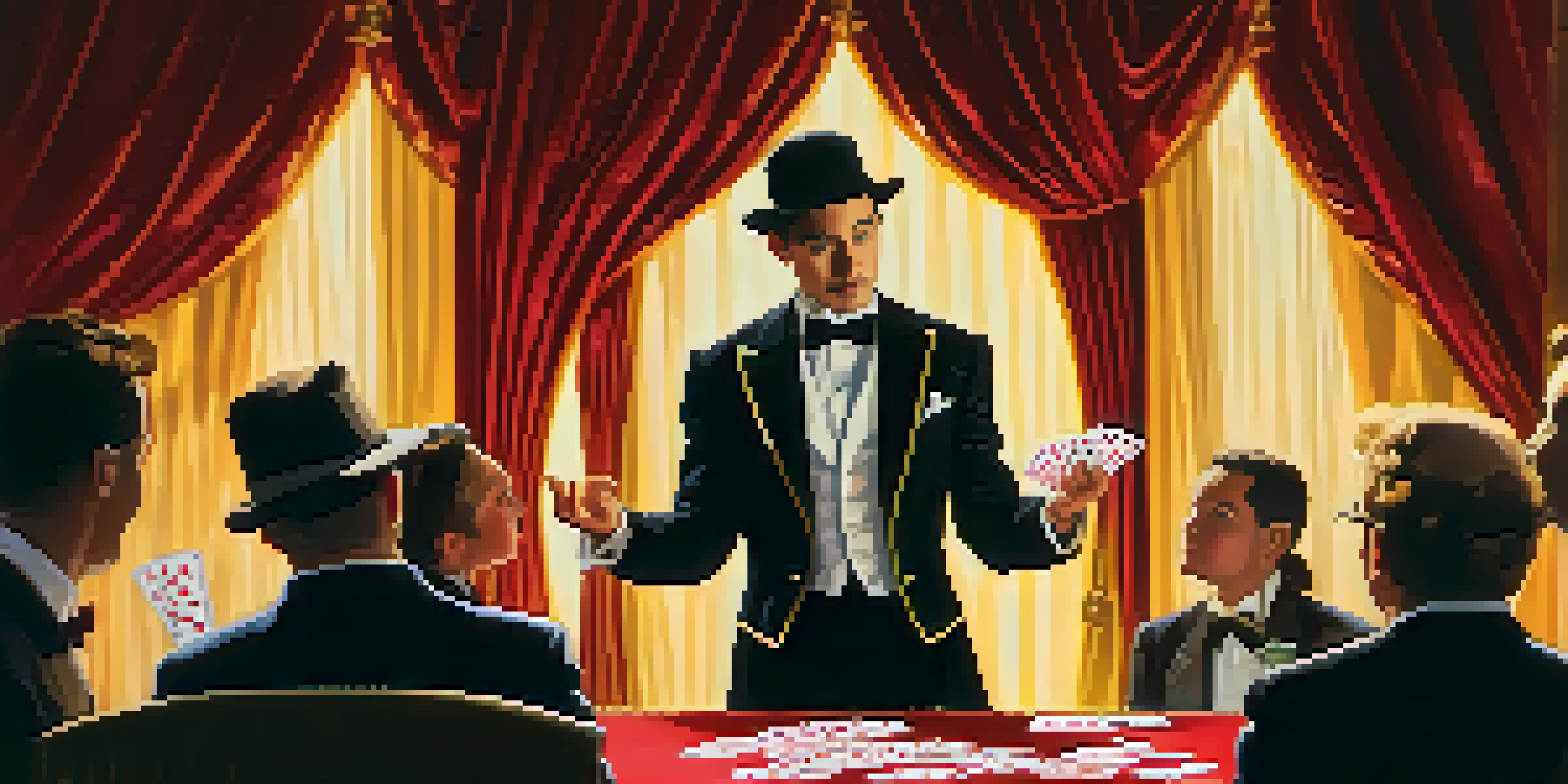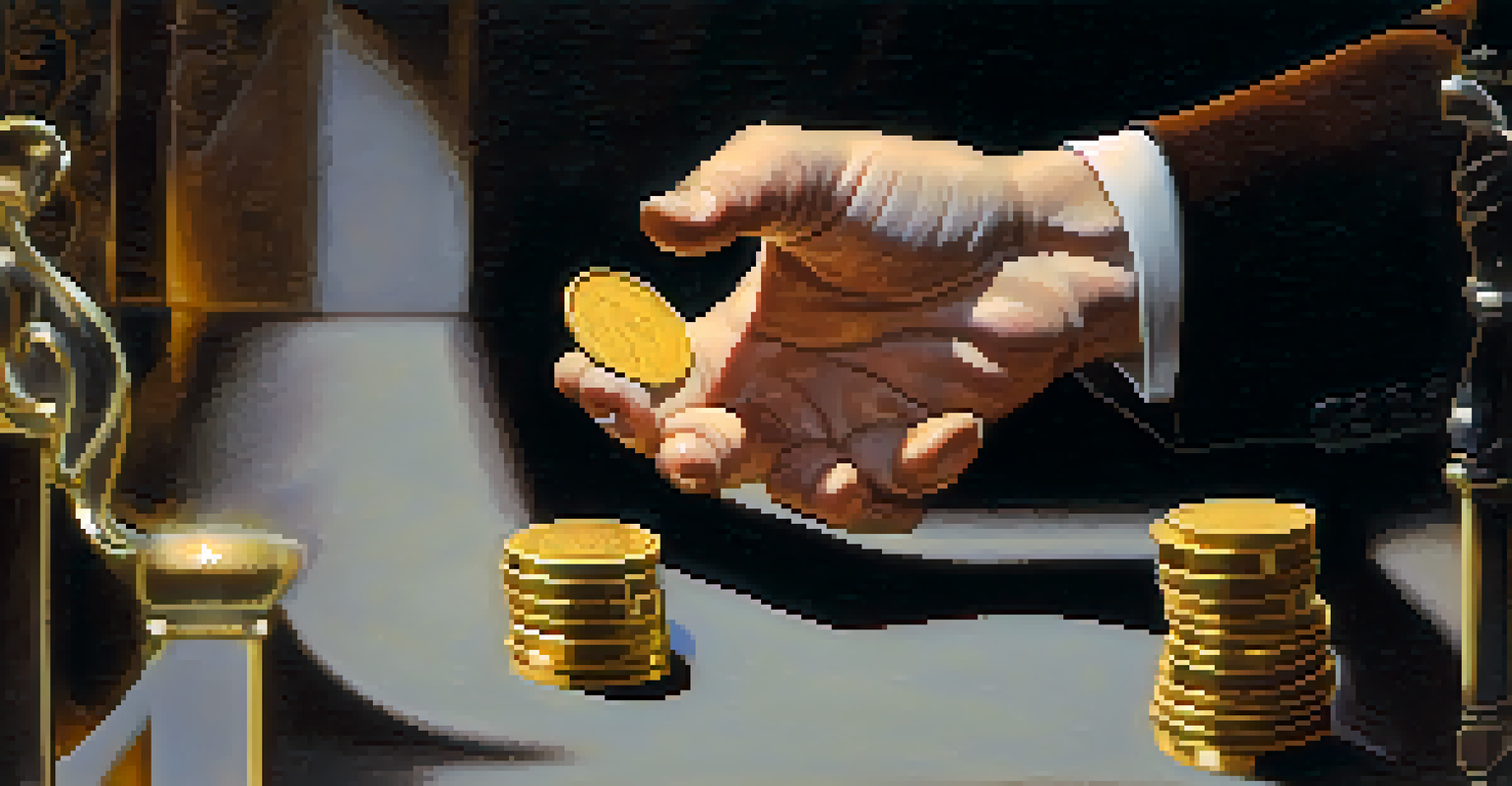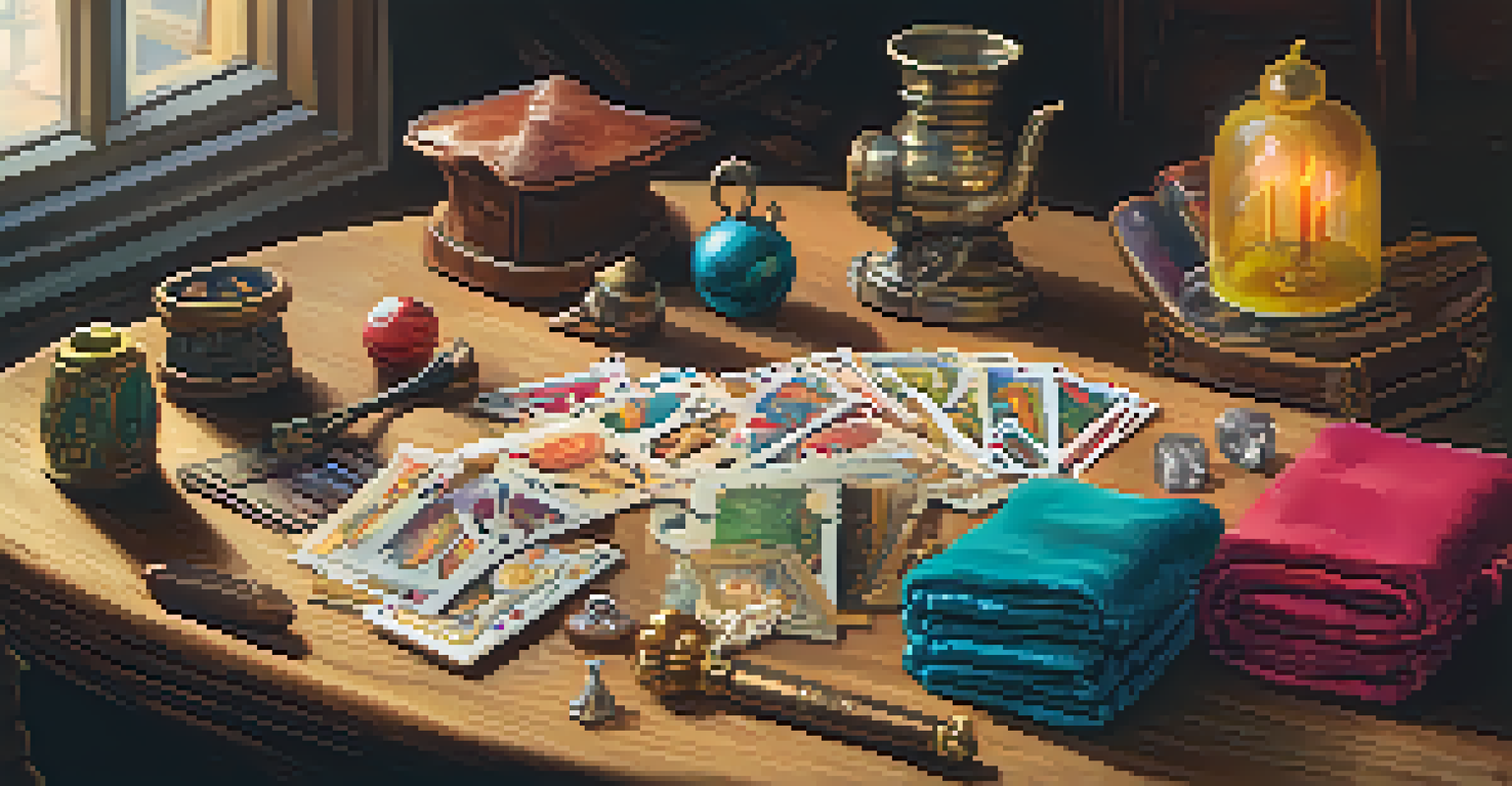Illusions with Everyday Objects: Magician's Best Tools

The Power of Perception: Understanding Illusions
Illusions rely heavily on how our brains perceive reality. When a magician performs, they often exploit the gaps in our perception to create seemingly impossible feats. For instance, a simple coin can vanish right before our eyes, leaving us questioning our own sight.
The real secret of magic lies in the performance.
This highlights a fascinating aspect of magic: it’s not just about trickery but also about understanding human psychology. Magicians know how to direct attention, making us focus on one thing while something else happens unnoticed. It's a dance between illusion and reality.
By understanding the principles behind perception, we can appreciate the artistry involved in magic. Every trick is a carefully crafted experience that plays on our expectations and beliefs about what is possible.
Everyday Objects: The Magician's Best Friends
Magicians often use everyday objects to create their illusions, making their tricks relatable and engaging. Items like cards, coins, and even pieces of string become tools of wonder in their hands. This not only makes the magic feel closer to us but also emphasizes creativity.

Consider a simple deck of cards. With just a bit of skill, a magician can perform intricate tricks that amaze audiences, transforming something so ordinary into an extraordinary experience. It’s a reminder that magic can be found anywhere, even in our own pockets.
Perception Shapes Our Reality
Magicians exploit the gaps in our perception to create illusions that challenge our understanding of reality.
The choice of these common items also allows magicians to perform in various settings without needing elaborate setups. This accessibility makes magic a versatile art form, capable of enchanting both small gatherings and grand stages.
The Art of Misdirection in Magic
Misdirection is a fundamental technique that magicians use to guide the audience's attention away from the method behind the trick. By focusing our gaze on one action, they can execute another unnoticed. It's like a magician’s sleight of hand, where the real magic happens out of sight.
Magic is not about the trick itself, but about the story that is told.
For example, when a magician appears to pull a rabbit from a hat, their subtle movements and engaging patter keep us captivated, allowing them to perform the necessary steps without our awareness. This technique transforms us from mere spectators into active participants in the illusion.
Understanding misdirection adds depth to our appreciation of magic. It’s not just about the end result but the journey of how the magician leads us there, creating a shared experience that feels intimate and thrilling.
The Role of Timing: Precision in Performance
Timing is crucial in magic; it's not just about what happens but when it happens. A perfectly timed reveal can amplify the surprise and intrigue of a trick, leaving the audience in awe. This is where practice and precision come into play, allowing magicians to master their craft.
Consider a classic trick where a magician makes a coin disappear. The timing of the gestures, the pauses, and the final reveal are all choreographed to enhance the illusion. When done right, the audience is left questioning their own eyes.
Misdirection Enhances Engagement
By guiding the audience's attention, magicians can perform tricks unnoticed, transforming spectators into active participants.
Good timing also helps to build anticipation and excitement. The pauses before a reveal can feel like an eternity, heightening the moment and making the eventual surprise even more impactful.
Psychological Tricks: Engaging the Audience’s Mind
Beyond the physical tricks, magic often involves psychological elements that engage the audience's mind. Magicians use patterns and expectations to manipulate what we think we know, creating a sense of wonder and disbelief. This interplay between thought and illusion is what makes magic so captivating.
For instance, a magician might ask you to think of a card while they shuffle a deck. By leveraging common thoughts and behaviors, they can create the illusion of mind-reading or prediction, blurring the line between reality and magic.
Understanding these psychological tricks allows us to appreciate the layers of skill involved in magic. It’s a blend of art, science, and entertainment that challenges our understanding of what is possible.
The Use of Props: Enhancing the Illusion
Props are essential in magic, serving as the physical manifestation of the illusion. From colorful scarves to elaborate boxes, these items are carefully chosen to enhance the performance and captivate the audience’s imagination. They become characters in the story being told.
Take a classic disappearing act, for example. The magician might use a curtain or a box as a prop to create a sense of mystery. The transformation of an object, or even a person, enhances the overall experience, making it more visually striking.
Everyday Objects Inspire Magic
Using common items for tricks makes magic relatable and demonstrates that wonder can be found in the simplest of things.
Ultimately, the props serve to deepen the engagement with the audience. They create visual cues and context, allowing the magician to weave a narrative that captivates and enchants while grounding the magic in reality.
Learning Magic: Embracing the Everyday
For those inspired to learn magic, the beauty lies in the simplicity of everyday objects. With a few basic items, anyone can start practicing tricks that amaze friends and family. It’s a fun way to explore creativity and develop performance skills.
Online tutorials and books provide ample resources for beginners. Learning to perform with everyday objects not only enhances skills but also builds confidence. It’s a journey of self-discovery where practice leads to mastery, turning the mundane into the extraordinary.

As you dive into the world of magic, remember that the goal is not just to amaze others but to connect with them. Magic is about sharing joy and wonder, and it starts with the simplest of tools—right at your fingertips.